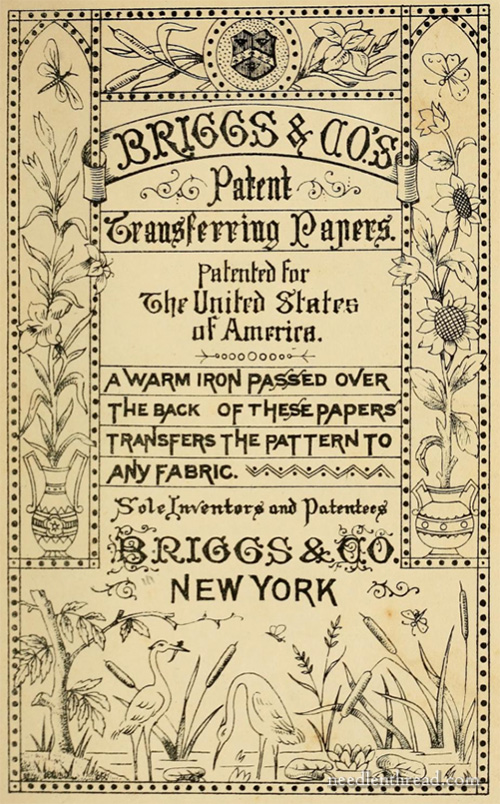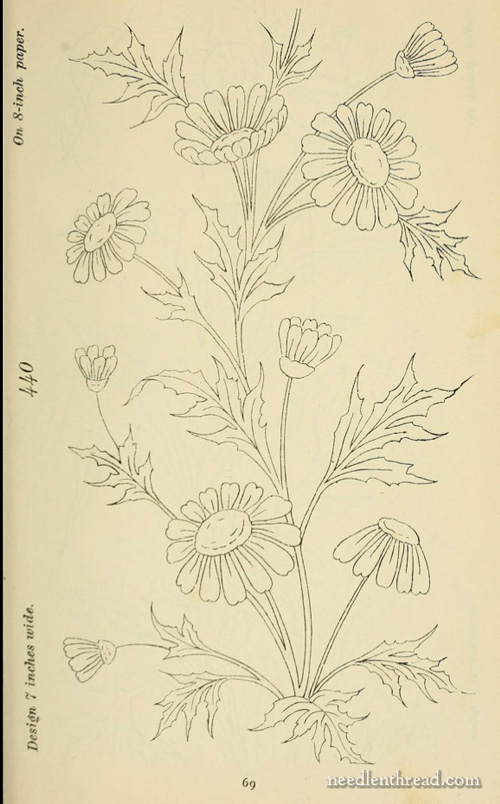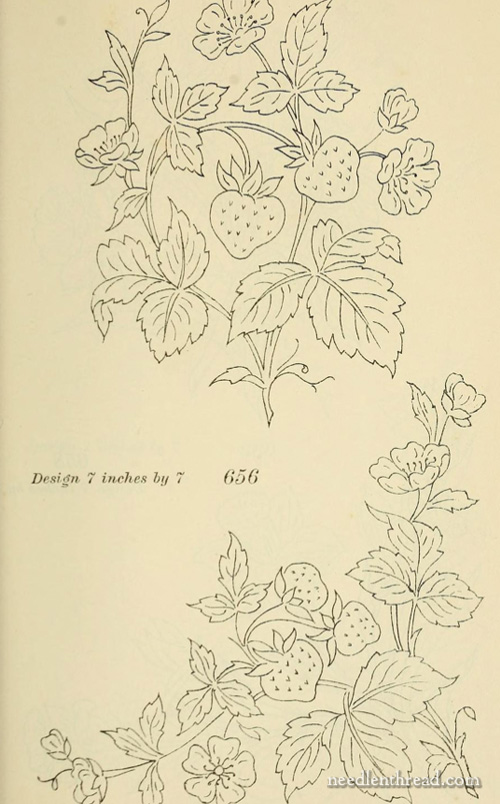I was reading an old needlework book the other day, published in 1907, when I came across a section on design transfer for embroidery. It began thus:
The transferring of designs on to the material is at no time a very easy occupation, and is certainly one which most people prefer to have done for them.
Some things haven’t changed much since 1907, methinks! Most of us who embroider for relaxation, for enjoyment, as a creative outlet, and even for a living are faced at one point or another with having to get a design onto fabric. For some, it can be a monumental deal-breaker. “If I have to transfer that, forget it.”
And while there are folks today who (hilariously – it always makes me chuckle!) will spurn iron-on transferring as if it is some kind of innovative, unworthy, inaccurate, or even harmful method of transfer (despite the massive leaps and bounds of ink science in recent decades), iron-on transfers have been the friend of the embroiderer for a long, long time.
Way back decades and decades – we can almost say centuries ago, and certainly longer than a century ago – methods of transferring embroidery designs were revolutionized by the iron-on transfer. And we continue to enjoy the benefits of the iron-on transfer today, thanks to those early pioneers in the process.
One of those pioneers was Briggs & Co.
In 1880 – that’s 141 years ago! – Briggs & Co published their catalog for patented iron-on embroidery transfers here in the US.

The Briggs & Co catalog is a wonderful collection of 19th century embroidery designs that I’ve written about before here on Needle ‘n Thread. But I think it deserves highlighting.
Embroiderers in the late 1800’s could refer to the catalog for designs they were interested in, and then place mail orders for the transfer papers. The designs in the catalog were not necessarily the size of the actual transfer, but size was clearly indicated so that the embroiderer knew what to expect.
In some regards, the approach to iron-on transfers hasn’t changed much, but in others, the instructions for use of the transfers were quite different from what they are now.
The science of ink has progressed quite a bit since then, making transfers today much more reliable. Plus, we have electric irons! Oh, what a wonder! Sometimes, it’s easy to forget that life was not always as it is now.
Ladies, with a taste for designing, can form beautiful groups of cutting and arranging flowers, &c, from various patterns. To do this most effectively, gum the small pieces (when cut) on to a sheet of paper, arranging them as desired, and, when the group is formed, transfer in the usual method.
If the iron be a little too cold, the design when transferred does not adhere firmly to the fabric, and is apt to rub off; in this case, hold the back of the work to the fire for two or three seconds, and the color will be at once permanently fixed.
If the iron be too hot, the composition will be too much dissolved and appear to spread only upon the tissue paper, whilst in reality it has been absorbed by the fabric; in this case, a little friction with the finger nail, or a small hard brush, will bring the design distinctly to the surface.
So, was your iron too cold? Hold the back of the embroidery up to the fire!
Was your iron too hot? Does it look like the ink dissipated completely? Add some friction and the design will appear.
Curious, isn’t it?

The original catalog is full of lovely designs that can still be used today with very little “dating” to them. Sure, some are dated, but others are timeless.
I’d like to say this is the daisy design we’ll be working through in the next series of tutorials that will be springing up here on Needle ‘n Thread very soon, but in fact, it’s not.
It’s a little too complicated for our series – but once we work through the upcoming daisy series together, you’ll have all the confidence you need to tackle the beautiful spray above!

If you worked through the strawberry series recently, you might want to take on something a little more grand, strawberry-wise, and Briggs & Co can supply you with a drawing.
And while you can’t order their iron-ons, you can definitely find their designs in their catalog, for free, online.
You’ll find the catalog here, on Internet Archive.
You can save it to your computer as a PDF, print any page you want, enlarge the page (if you want) with a photocopier, trace over the lines to darken them, and then trace the design onto your fabric (or use your favorite design transfer method).
It’s not a bad way to have access to some very pretty embroidery designs – for free!
So, there’s a little weekend rabbit hole for you. I hope you enjoy the publication on Internet Archive and that you have a lovely weekend with your needle and thread!